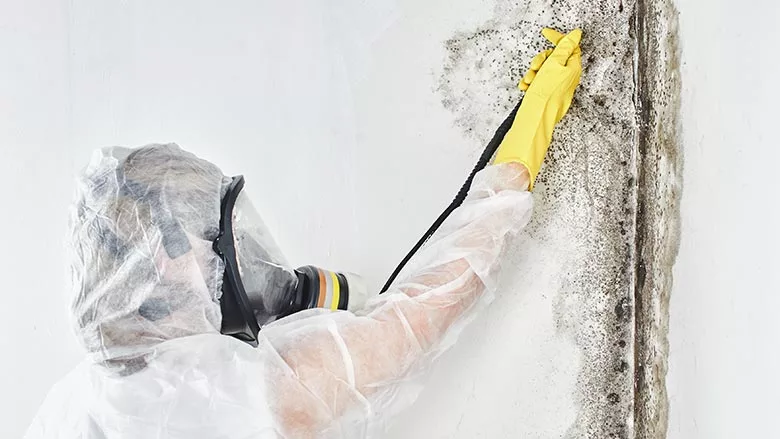What You Need to Know About Jobsite Ventilation
“Virtually everyone in the remodeling and remediation industry knows that stagnant air fills up with toxic dust and fumes. The problem strikes a lot of people as a routine no-brainer: open a couple of windows, turn on a fan, and you’re done.”

If the thought of dead air spaces doesn’t cause your heart to beat faster, you’re not alone.
“Virtually everyone in the remodeling and remediation industry knows that stagnant air fills up with toxic dust and fumes,” said Mike Goyetche, owner of Fine Finish Shop (781-598-2300), a bathtub refinishing business in Lynn, Mass. “The problem strikes a lot of people as a routine no-brainer. Open a couple of windows, turn on a fan, and you’re done!”

Unfortunately, however, many ventilation systems can actually make a bad situation worse. The deficiencies of the average exhaust fan became dramatically clear to Goyetche during a refinishing project at a major Boston hotel. He was putting the final coat on a tub when his portable fan broke. A thick buildup of overspray on the fan blades had shut down the motor. Nevertheless, Goyetche continued working only to be interrupted by frantic banging on the door. When he opened it, a security guard pointed out cause of the commotion. “A thick white cloud of overspray was drifting down the hallway,” Goyetche said.

“Tired, confused workers,” he said, “are more prone to costly mistakes and accidents.
“Employers, workers, and the public are all paying the price of failing to recognize and manage these risks” said Goyetche. “The financial costs of toxic exposure cases include reduced productivity, litigation fees, and increased workmen’s compensation and insurance payments. These losses not only threaten the profitability and growth of the remodeling and construction industries, but also the economic health of businesses located in buildings where toxic contaminants have accumulated in dead air spaces.” Likewise, the same illnesses that can afflict builders and remodelers can also occur in the professionals, businesspeople, homeowners, and students who occupy contaminated buildings.

The fatal spark in two separate fires that killed three Boston-area floor sanders in a 10-month period between 2004 and 2005 came from a pilot light. In response to the tragedies, MassCOSH met with industry representatives to develop floor-finishing safety policies. Among their recommendations was a call for contractors to run a well-designed ventilation system throughout the drying process.2

He noted that the term “explosion-proof” often needs clarification. “The designation typically refers to fans that have been tested for conformance with the requirements of the Air Movement and Control Association (AMCA) or some other outside agency. This official certification isn’t an absolute guarantee against explosions within the fan motor, but it does ensure significantly less exposure to damage and injury.”
“Explosion-proof fan motors are encased in housing that not only shields the components from volatile fumes and articles but also contains any internal fires or explosions,” he explained. This and other key safeguards aren’t limited to AMCA-certified fans, however. “For those who can’t afford the steep cost of an explosion-proof model, exhaust fans with a totally enclosed, brushless spark-resistant, motor offer particularly good value as well as excellent risk protection. For the highest degree of spark resistance, make sure all fan parts that are exposed to a potentially volatile air stream are constructed from nonferrous materials,” he said. “Materials like aluminum alloy and glass-reinforced nylon are poor conductors of heat and electricity and therefore far less likely than steel to ignite.”
The right fan will also help control the spread of dust and overspray. “A fan with a state-of-the-art built-in filtration system is one of the smartest investments you can make,” Goyetche said. “The efficient removal of dust from the work significantly reduces cleanup time and safeguards you and your customers from exposure to harmful contaminants.
“If a solution to a serious problem is easy and affordable-and offers big business benefits-why not adopt it?” Goyetche said.

Breathing Easier: Air Safety Tips for Restorers
For more information on best practices for working with toxic substances, visit the U.S. Environmental Protections Agency’s Web site: www.epa.gov.- Provide maximum ventilation to work areas during installation and for at least 72 hours afterward.
- Remind occupants, especially children, to stay away from the work area.
- Use barriers such as taped plastic sheeting over doors and windows to minimize the spread of harmful contaminants through the home.
- Whenever possible, allow materials containing volatile emissions to off-gas outdoors before bringing them into the house.
- If possible, bring materials outside to apply paint and sealants and wait until they dry before bringing them inside.
- Seal containers of paint and other potentially hazardous materials after use and store in a well-ventilated area but away from heaters, fans, and air conditioning units.
- Always follow manufacturers' guidelines regarding ventilation requirements and all other health and safety recommendations for all products, including paints, sealants, adhesives, and appliances.
1.“Protecting Workers and Homeowners from Floor Finishing Hazards,” Massachusetts Coalition for Safety and Health, http://www.masscosh.org/node/76.
2. Electronic Library of Construction Occupational Safety and Health, National Institute for Occupational Health and Safety Website, Fatality Assessment and Control Evaluation Program, Massachusetts Case Report 05-MA-044, www.cdc.gov/niosh/FACE/stateface/ma/05ma044.htm, January 31, 2006.
Looking for a reprint of this article?
From high-res PDFs to custom plaques, order your copy today!





